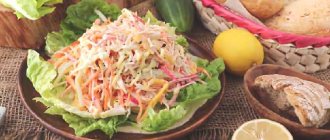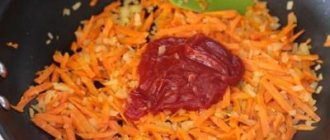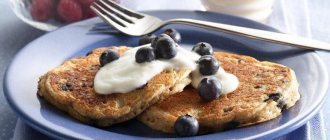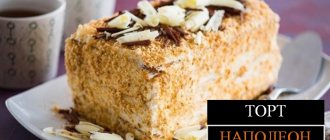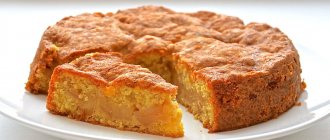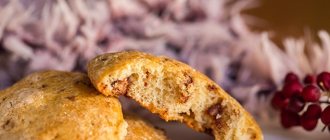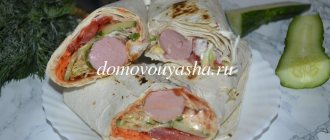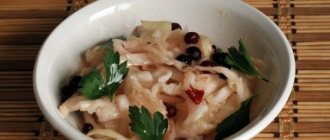Over the past few years, street food culture has begun to surpass restaurant culture. The population, of course, is interested in parfaits and langoustines, but we are not ready to exchange street food for this. And it’s not even about the high price segment. The daily consumption of haute cuisine will certainly get boring, and the soul will be drawn to burgers, shawarma and hot dogs. Fast food lovers have retrained themselves as adherents of healthy eating and have come up with an original replacement for harmful but favorite dishes - falafel. For every 1 shawarma cart today, there are 2 falafel carts. The city embraced a new type of street food without even thinking about the composition and quality of the ingredients.
What exactly is falafel, and is the new street snack safe and healthy?
What is falafel?
Falafel is a popular Middle Eastern dish that is deep-fried balls of chopped chickpeas (or other legumes, such as beans) seasoned with garlic, herbs and spices, including cumin and coriander. In eateries and fast food outlets in many countries, including Ukraine, falafel is often served as a vegetarian shawarma - in pita bread or pita bread with vegetables and sauce.
They say falafel originated in Egypt several thousand years ago. Small round “pies” were invented by Egyptian Coptic Christians as a substitute for meat during long periods of fasting. Today, falafel is still a popular daily dish in Egypt and can be found in many all-inclusive hotels.
By themselves, these crispy balls are very tasty and nutritious. Packed with plant-based protein from chickpeas, they keep you full for longer. This is why most Egyptians and other people in the Middle East actually start their day with falafel and can eat it at any time of the day.
Benefits and harms
You already know what falafel is and how it is eaten; this is discussed in detail above. It's time to talk about the beneficial qualities of the dish. The main component of the snack is chickpeas, so it’s worth considering its advantages:
- Helps speed up metabolism;
- Improves brain function;
- Reduces the risk of developing viral diseases;
- Lowers blood pressure levels;
- Helps with diseases of the heart and blood vessels;
- Improves immunity level;
- Stimulates brain function;
- Eliminates the risk of developing eye diseases;
- Lowers blood sugar;
- Helps stabilize digestive processes;
- Calms the nervous system;
- Has an anti-inflammatory effect;
- Removes toxins and waste from the body.
We also recommend: Why do you want butter?
Falafel cutlet is not only tasty, but also healthy, isn’t it? However, it is worth considering both sides of the coin, studying possible harm and contraindications.
- The dish is fried in a frying pan or deep-fried in a large amount of oil - this can lead to pain in the gastrointestinal tract and also cause weight gain;
- Choose only trusted establishments that serve chickpea cutlets - unscrupulous cooks can ruin any dish.
Eliminate chickpeas from your diet if:
- Do you suffer from gastrointestinal diseases;
- Have bladder pathologies;
- Have encountered problems with stool and blood circulation;
- Do you know about individual intolerance to the product;
- Metabolism is slow.
How to cook falafel?
Classic chickpea falafel is easy to make (yes, it's a lot easier than it sounds), but it will take some time.
- The first step is preparation. It is necessary to first soak the chickpeas in plenty of water overnight (ideally leave for 18 hours).
- Then (the next day) puree it. Take soaked chickpeas, place them in a blender bowl, add fresh herbs (parsley, cilantro and dill), fresh garlic, spices to taste, etc. Mix all this at medium speed until you get a homogeneous greenish mixture that resembles a paste in consistency .
Important tip: to make falafel easier to shape and to keep its shape well when frying or baking, it is better to first transfer the finished chickpea mixture from a blender to a bowl, cover with a lid and put it in the refrigerator to cool for at least an hour.
- After this, you can add a few sesame seeds and 1 tsp to the chickpea puree. baking powder to make the balls more fluffy. Then lightly wet your hands with water and begin to form rounds or shape them into cutlets. You can also freeze them for later use.
- Next, choose the cooking method. Frying is a traditional option (you can make falafel in the oven, we’ll talk about this below). Heat vegetable oil in a saucepan over medium heat until it begins to bubble. Carefully lower the cutlets into the pan and leave to fry for 3-4 minutes until they are golden brown. It is better to fry them in batches so that the balls do not stick together.
- Place the hot falafel on kitchen napkins to remove excess fat and let it cool.
Advice: if you want to get the real taste of the original falafel by preparing it yourself at home, we recommend not skimping on herbs and spices.
Tricks and Tips
Additional nuances not mentioned in the recipes will answer even novice cooks’ questions about cooking at home:
- The ideal size of one falafel is a “ball” with a diameter of 2 to 4 cm and a weight of 30-40 g, as in the photo.
- Instead of baking soda, you can use regular baking powder.
- The texture of falafels can vary. Some people like the pasta soft and smooth, while others like the grainy filling of the “ball”. A matter of taste!
- The list of spices indicated in the recipes is far from complete. You can also add ground cinnamon, ginger, and nutmeg to the falafel mince.
Falafels are combined with vegetable salads, hot vegetable dishes, and any sauces. They can be served both as a side dish to the main dish and as an appetizer.
How to cook falafel in the oven?
If you prefer to avoid fried foods in your diet, you can also bake falafel in the oven at 180 degrees. Cooking time will be approximately 15-20 minutes (you will need to turn the balls several times to ensure they get an even crust). And before putting the falafel in the oven, grease a baking sheet or baking dish with a little olive oil.
Healthy and tasty snack: hummus at home and what to eat it with
Falafel sauce
Falafel can be eaten wrapped in pita bread with lettuce, cucumber, tomato, sometimes olives, or as a separate dish immediately after it has cooled. To make the dish even tastier, prepare the sauce. This can be a traditional option - tahini dressing, which is made from ground sesame seeds, or a simpler yogurt dip according to the recipe below.
You will need:
- 1 tbsp. natural yogurt
- 1/2 tbsp. l. lemon zest
- 1 tbsp. l. freshly squeezed lemon juice
- 1 tbsp. l. chopped fresh cilantro leaves
- 2 tsp. chopped fresh parsley leaves
- 1/2 tsp. ground cumin (optional)
How to cook:
In a small container, mix all the ingredients together and mix well with a spoon until smooth. Add salt and spices to taste. Store in the refrigerator until use.
Composition and calorie content of falafel
Pictured is falafel.
For each dish, the nutritional value should be calculated separately, taking into account its components. The data given corresponds to the classic recipe. Heat treatment - deep frying.
Calorie content of falafel is 333 kcal per 100 g, of which:
- Proteins - 13.3 g;
- Fats - 17.8 g;
- Carbohydrates - 31.8 g;
- Water - 35 g;
- Ash - 2.1 g.
Vitamins per 100 g:
- Vitamin A - 1 mcg;
- Vitamin B1, thiamine - 0.146 mg;
- Vitamin B2, riboflavin - 0.166 mg;
- Vitamin B5, pantothenic acid - 0.292 mg;
- Vitamin B6, pyridoxine - 0.125 mg;
- Vitamin B9, folate - 104 mcg;
- Vitamin C, ascorbic acid - 1.6 mg;
- Vitamin PP - 1.044 mg.
Macroelements per 100 g:
- Potassium, K - 585 mg;
- Calcium, Ca - 54 mg;
- Magnesium, Mg - 82 mg;
- Sodium, Na - 294 mg;
- Phosphorus, P - 192 mg.
Microelements per 100 g:
- Iron, Fe - 3.42 mg;
- Manganese, Mn - 0.691 mg;
- Copper, Cu - 258 μg;
- Selenium, Se - 1 μg;
- Zinc, Zn - 1.5 mg.
Fats per 100 g:
- Saturated - 2.383 g;
- Monounsaturated - 10.17 g;
- Polyunsaturated - 4.16 g.
There are 10 types of essential amino acids, and most of all lysine and rare arginine, which have an antioxidant effect, without which the formation of muscle mass is impossible, atherosclerosis quickly develops. Among the non-essential acids, glutamic acid predominates - with its deficiency, the child’s growth stops and the risk of developing Parkinson’s disease increases.
Despite deep frying, which is considered one of the most harmful culinary processes, falafel contains a minimal amount of omega-6 and omega-9, polyunsaturated and unsaturated fatty acids. This allows you to introduce the dish not only into a vegetarian diet, but also when losing weight. But even if you choose the classic version of the dish - deep-frying rather than baking, you can burn the energy obtained from 100 g of the dish by running for 40 minutes, jumping rope for 1.20 hours or 8 hours of uninterrupted sleep.
Falafel in pita bread
Warm pita bread stuffed with crispy hot falafel balls, cool sliced tomatoes and cucumbers, chopped onions and topped with sesame tahini sauce is a real gastronomic treat that is definitely worth adding to your arsenal of delicious and healthy recipes.
You will need:
- falafel (homemade or purchased)
- tahini sauce (homemade or store bought)
- lavash leaves
- 2 tomatoes (diced)
- 1 cucumber (diced or sliced)
- 1 small onion (red or white) chopped
- a handful of chopped parsley and dill
Preparation:
Brush the inside of the pita bread with sesame tahini sauce (you can substitute Greek yogurt) and then assemble the appetizer as usual. Lay out the required amount of ingredients, using 3-4 falafel balls per pita bread, wrap in a roll and send to dry on both sides in a dry frying pan or fry on the grill. A delicious, satisfying and nutritious snack is ready!
Falafel can also be wrapped in flatbread, oatmeal, added as a side dish to porridge, or added to salads or savory bowls. Show a little imagination, and you will always know how to surprise your loved ones and friends!
conclusions
Falafel is a great example of a vegetarian food that will be a godsend for people on a diet. To reduce the calorie content of a dish, it is enough to slightly change the way it is prepared. Due to the high protein content and slow carbohydrates, the “balls” perfectly satisfy hunger.
This dish is so tasty and healthy that it will be loved by many and will subsequently complement any healthy diet. Falafel is suitable for both everyday and holiday tables.
How to spend more time on yourself and your family, rather than spending hours cooking? How to make a dish beautiful and appetizing? How to get by with a minimum number of kitchen appliances? The 3in1 miracle knife is a convenient and functional kitchen assistant. Try it with a discount.
